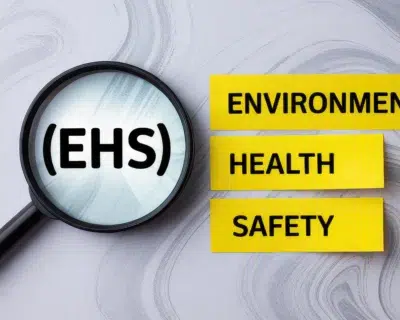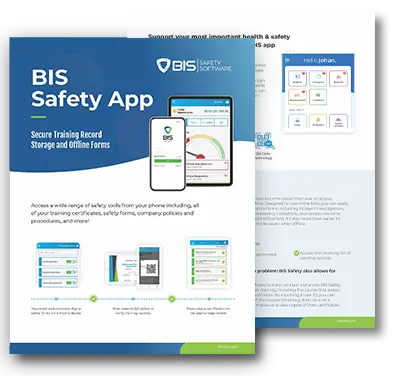
What is EHS Management in 2023
As the world becomes more conscious of environmental safety and health, the need for EHS management continues to rise. EHS, an acronym for Environment, Health, and Safety, is a multidisciplinary field that is concerned with creating and maintaining safe working environments. EHS management is an essential part of any organization that aims to maintain a safe workplace, protect its employees, and comply with regulations.
In this ultimate guide, we’ll cover everything you need to know about EHS management in 2023, from what it is, the role of an EHS manager, EHS fees, EHS management software, EHS compliance, EHS procedures, and an EHS system.
Explore this article:
- What is an EHS Manager?
- EHS Fees
- What is EHS Management Software?
- What is EHS Compliance?
- What is EHS Management?
- EHS Procedures
- What is EHS?
What is an EHS Manager?
An EHS manager is responsible for overseeing and managing the organization’s environmental, health, and safety policies and procedures. EHS managers are responsible for developing and implementing policies that promote environmental safety and health, ensuring that the organization complies with relevant laws and regulations, and promoting a culture of safety and environmental responsibility within the organization. An EHS manager is responsible for developing and implementing EHS programs, conducting risk assessments, and implementing control measures to prevent accidents and injuries.
EHS Fees
EHS fees refer to the costs associated with EHS management. The costs of EHS management can vary depending on the size of the organization, the industry, and the location. EHS fees can include the cost of hiring EHS consultants, the cost of implementing EHS programs and initiatives, the cost of training employees on EHS policies and procedures, and the cost of maintaining and upgrading EHS management software.
EHS Fee Examples:
Environmental Permit Fees:
Organizations may need to obtain environmental permits to operate facilities or engage in activities that have the potential to impact the environment. Environmental permits typically require fees to be paid to the regulatory agency.
OSHA Penalties:
The Occupational Safety and Health Administration (OSHA) is responsible for enforcing workplace safety regulations in the United States. OSHA can impose penalties on organizations that violate safety regulations, including fines and penalties for non-compliance.
Hazardous Waste Fees:
Companies that generate, transport, or dispose of hazardous waste may need to pay fees to regulatory agencies to obtain permits or comply with regulations related to the management of hazardous waste.
Air Emissions Fees:
Organizations that emit pollutants into the air may need to pay fees to obtain permits or comply with regulations related to air emissions.
Water Quality Fees:
Factories or facilities that discharge pollutants into water bodies may need to pay fees to obtain permits or comply with regulations related to water quality.
Occupational Health Services Fees:
Organizations may need to pay fees for occupational health services, including medical surveillance, respiratory protection, and hearing conservation programs.
Environmental Auditing Fees:
Companies may need to pay fees for environmental audits to assess their compliance with relevant laws and regulations.
Training Fees:
Businesses may need to pay fees for EHS training programs to ensure that employees are trained on relevant EHS policies and procedures.
EHS Consulting Fees:
Organizations may need to pay fees for EHS consulting services to obtain advice and support related to EHS management.
Insurance Premiums:
Employers may need to pay higher insurance premiums if they have a poor EHS record, indicating a higher risk of incidents and injuries.

What is EHS Management Software?
EHS management software is a computer program that is designed to help organizations manage their environmental, health, and safety policies and procedures. This software is a digital solution that provides a centralized platform for organizations to manage all aspects of EHS management, including incident reporting, risk assessment, training management, and compliance monitoring.
EHS management software is beneficial to organizations because it streamlines EHS management processes, reduces manual workload, and provides real-time access to information related to EHS performance. By using EHS management software, organizations can identify and manage risks, prevent incidents and injuries, and maintain compliance with relevant laws and regulations.
Features of EHS Management Software
The features of EHS management software vary depending on the software provider and the specific needs of the organization. However, some of the common features of EHS management software include:
Incident Reporting: EHS management software provides a centralized platform for employees to report incidents, such as accidents, near-misses, and environmental incidents. Incident Reporting software allows organizations to track and manage incidents and provides tools for investigating and analyzing incidents to identify the root causes and prevent similar incidents in the future.
Risk Assessment: EHS management software provides tools for conducting risk assessments to identify potential hazards and assess the risk associated with each hazard. Risk Management software allows organizations to track and manage risks and provides tools for implementing control measures to mitigate the identified risks.
Training Management: EHS management software provides tools for managing EHS training programs, including scheduling training sessions, tracking employee attendance, and managing training records. Training Management software allows organizations to ensure that employees are trained on relevant EHS policies and procedures and can provide real-time reports on the training status of employees.
Compliance Monitoring: EHS management software provides tools for monitoring and tracking compliance with relevant laws and regulations. The software can generate reports on compliance status and provide alerts when compliance requirements are due.
Benefits of EHS Management Software
There are several benefits to using EHS management software, including:
Streamlining EHS Management Processes: EHS management software provides a centralized platform for managing all aspects of EHS management, reducing the need for manual processes and streamlining EHS management processes.
Real-Time Access to Information: EHS management software provides real-time access to information related to EHS performance, allowing organizations to identify and manage risks, prevent incidents and injuries, and maintain compliance with relevant laws and regulations.
Automated Workflows: EHS management software automates tasks such as incident reporting, risk assessment, and compliance monitoring, reducing manual workload and freeing up time for EHS managers to focus on strategic initiatives.
Improved Communication and Collaboration: EHS management software provides a platform for improved communication and collaboration between employees, EHS managers, and other stakeholders.
Cost Savings: EHS management software can reduce the cost of managing EHS programs by reducing the need for manual processes, improving efficiency, and reducing the risk of incidents and injuries.
What is EHS Compliance?
EHS compliance refers to the process of ensuring that an organization complies with relevant laws and regulations related to environmental, health, and safety. EHS compliance is essential for organizations to avoid fines, penalties, and legal action related to environmental safety and health. EHS compliance can involve implementing policies and procedures that promote environmental safety and health, training employees on EHS policies and procedures, conducting regular risk assessments, and ensuring that the organization’s facilities and equipment meet relevant safety standards.
What is EHS Management?
EHS management refers to the process of managing an organization’s environmental, health, and safety policies and procedures. EHS management involves developing and implementing policies that promote environmental safety and health, ensuring that the organization complies with relevant laws and regulations, and promoting a culture of safety and environmental responsibility within the organization. EHS management also involves monitoring and tracking EHS performance, identifying areas for improvement, and implementing control measures to prevent accidents and injuries.
What is an EHS System?
An EHS system is a collection of policies, procedures, and tools that are used to manage an organization’s environmental, health, and safety programs. An EHS system can include EHS management software, risk assessment tools, safety procedures, training materials, and reporting and analytics tools. An EHS system is essential for organizations to manage their E
HS programs effectively and efficiently, ensuring compliance with relevant laws and regulations, and promoting a culture of safety and environmental responsibility within the organization.
EHS Procedures
EHS procedures are the steps that an organization takes to manage environmental, health, and safety risks effectively. EHS procedures can include risk assessments, hazard identification and control, incident reporting and investigation, emergency response planning, and training on EHS policies and procedures. EHS procedures are essential for organizations to prevent accidents and injuries, minimize environmental impact, and ensure compliance with relevant laws and regulations.
What is EHS?
EHS is a term that is used to describe a range of disciplines that are related to environmental safety and health. EHS is a broad term that covers various aspects of Safety Management System, including environmental management, health and safety management, and sustainability management. The primary goal of EHS is to create and maintain a safe and healthy workplace for employees and ensure that the organization complies with relevant laws and regulations.
EHS Management Summarized
EHS management is an essential part of any organization that aims to maintain a safe workplace, protect its employees, and comply with regulations. EHS management involves developing and implementing policies that promote environmental safety and health, ensuring that the organization complies with relevant laws and regulations, and promoting a culture of safety and environmental responsibility within the organization. An EHS manager is responsible for overseeing and managing the organization’s environmental, health, and safety policies and procedures. EHS management software can help organizations streamline their EHS management processes, automate tasks, and ensure that the organization complies with relevant laws and regulations. EHS procedures are essential for organizations to manage environmental, health, and safety risks effectively.




































